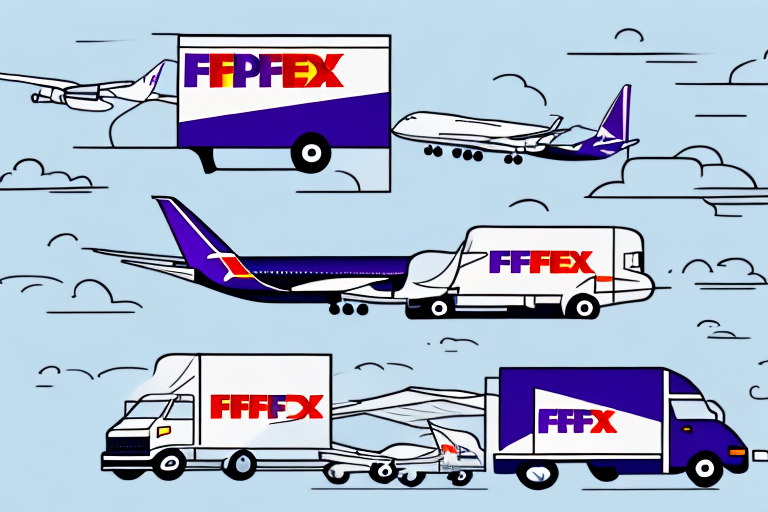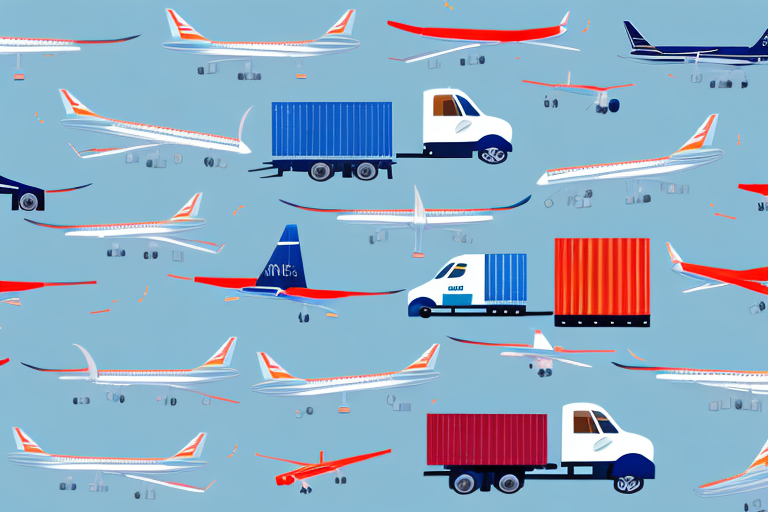As the world increasingly turns towards eco-friendly practices, the e-commerce industry has also begun to embrace sustainable solutions. Eco-friendly parcel shipping practices represent a critical aspect of sustainable e-commerce, and choosing the right carrier is crucial in ensuring that your business activities align with your environmental values. In this article, we present the top 10 parcel shipping carriers that prioritize sustainable solutions for your e-commerce needs.
Introduction: The Importance of Eco-Friendly Shipping for E-Commerce
Eco-friendly shipping involves taking conscious steps towards reducing the environmental impact of parcel delivery. With the e-commerce industry projected to reach $6.5 trillion by 2024, reducing the carbon footprint of parcel shipping is crucial for mitigating the adverse effects of climate change. By choosing a parcel shipping carrier that prioritizes eco-friendly practices, e-commerce businesses can play a vital role in protecting the planet while continuing to grow their business.
One of the ways that e-commerce businesses can reduce their carbon footprint is by optimizing their packaging. This involves using the right size and type of packaging material to minimize waste and reduce the amount of space needed for transportation. Additionally, using biodegradable or recyclable packaging materials can further reduce the environmental impact of parcel delivery. By implementing these eco-friendly packaging practices, e-commerce businesses can contribute to a more sustainable future while also improving their bottom line through reduced shipping costs.
Criteria for Choosing Parcel Shipping Carriers for Sustainable E-Commerce
When choosing a parcel shipping carrier for eco-friendly e-commerce, there are several key factors to consider. These include carrier policies regarding sustainable practices, transparency in reporting on carbon footprint, efforts to reduce emissions, and development of innovative sustainable solutions. By taking these factors into account, you can choose a carrier that shares your commitment to sustainable practices.
Another important factor to consider when choosing a parcel shipping carrier for sustainable e-commerce is their use of renewable energy sources. Look for carriers that have invested in renewable energy, such as solar or wind power, to power their operations. This not only reduces their carbon footprint but also supports the growth of renewable energy industries. Additionally, consider carriers that offer carbon offset programs, which allow you to offset the emissions generated by your shipments by investing in renewable energy or other sustainability projects.
FedEx: A Leader in Sustainable Shipping Practices
FedEx prioritizes sustainable shipping practices by setting aggressive climate goals, developing eco-friendly delivery vehicles, and partnering with organizations to develop sustainable solutions. The company is committed to reducing CO2 emissions, with a goal of reaching carbon neutral status globally by 2040.
In addition to reducing CO2 emissions, FedEx has also implemented sustainable packaging practices. The company has developed a program called "Reduce, Replace, Revolutionize" which aims to reduce the amount of packaging used, replace non-sustainable materials with more eco-friendly options, and revolutionize the way packages are designed and shipped.
FedEx has also taken steps to reduce waste and increase recycling. The company has implemented a program called "EarthSmart Solutions" which encourages customers to use more sustainable shipping options and provides resources for proper recycling and disposal of packaging materials.
UPS: Making Strides towards a More Eco-Friendly Future
UPS has taken significant steps towards achieving sustainable shipping solutions by deploying eco-friendly delivery vehicles, optimizing delivery routes for greater efficiency, and investing in renewable energy sources. The company has set targets to reduce emissions by 12% and increase the use of alternative fuel vehicles by 25% by 2025.
In addition to these efforts, UPS has also implemented a paperless billing system to reduce paper waste and has partnered with organizations to promote sustainable practices in the supply chain. The company has also introduced a program that allows customers to offset the carbon emissions generated by their shipments by investing in certified carbon reduction projects.
Furthermore, UPS has committed to sourcing 25% of its electricity from renewable energy sources by 2025 and has already made progress towards this goal by investing in solar and wind energy projects. The company has also implemented energy-efficient technologies in its facilities and has set a target to reduce energy consumption by 20% by 2020.
DHL: Innovating Sustainable Solutions for Global Shipping Needs
DHL is committed to the development of sustainable shipping solutions by incorporating electric vehicles, scooters and cargo bikes into their delivery fleet. The company has set ambitious goals of delivering 70% of its own first and last-mile services with clean transport modes by 2025 to reduce CO2 emissions.
In addition to their efforts to reduce CO2 emissions, DHL is also investing in renewable energy sources to power their facilities. They have installed solar panels on the roofs of their warehouses and sorting centers, and are exploring the use of wind and geothermal energy. By utilizing renewable energy, DHL is further reducing their carbon footprint and contributing to a more sustainable future.
USPS: Supporting Sustainable E-Commerce through Eco-Friendly Shipping Options
USPS has taken steps to offer eco-friendly options to customers, such as the EcoEnvelopes service that enables customers to reuse envelopes and reduce waste. USPS has also set sustainability goals with an aim to reduce total greenhouse gas emissions by 50% by 2025.
In addition to the EcoEnvelopes service, USPS has also introduced the Cradle-to-Cradle Certified packaging program. This program ensures that the materials used in USPS packaging are environmentally safe and can be recycled or composted after use. This initiative has helped reduce the amount of waste generated by USPS packaging.
Furthermore, USPS has implemented a fleet of alternative fuel vehicles, including electric and hybrid vehicles, to reduce emissions from transportation. The agency has also installed solar panels on some of its facilities to generate renewable energy and reduce its reliance on non-renewable sources.
Canada Post: A Comprehensive Approach to Eco-Friendly Parcel Delivery
Canada Post has a comprehensive approach to sustainable parcel delivery by focusing on reducing emissions, promoting eco-friendly packaging and investing in a hybrid-electric delivery fleet. The company is committed to achieving a 30% reduction in carbon emissions by 2025.
One of the ways Canada Post is reducing emissions is by optimizing delivery routes to minimize the distance traveled by their vehicles. This not only reduces emissions but also saves time and fuel costs. Additionally, the company is exploring the use of alternative fuels such as biofuels and hydrogen fuel cells to power their delivery vehicles.
Canada Post is also promoting eco-friendly packaging by offering customers a range of sustainable packaging options. These include recycled and biodegradable materials, as well as reusable packaging. The company is also encouraging customers to reduce waste by choosing the right size of packaging for their parcels and avoiding over-packaging.
Royal Mail: Fostering Sustainable Practices in the UK’s E-Commerce Industry
Royal Mail has set targets to reduce carbon intensity by 25% by 2025, while also investing in low-carbon vehicles and other sustainable shipping solutions. The company has also launched a program to encourage customers to switch to electronic communication options to help reduce paper waste.
In addition to these initiatives, Royal Mail has also implemented a recycling program for its packaging materials. The company encourages customers to reuse or recycle their packaging materials, and has partnered with local recycling facilities to ensure that these materials are properly disposed of. By promoting sustainable practices throughout its operations, Royal Mail is leading the way in creating a more environmentally-friendly e-commerce industry in the UK.
Australia Post: Spearheading Eco-Friendly Shipping Initiatives Down Under
Australia Post has taken steps towards promoting sustainable shipping practices by switching to electric delivery vehicles, implementing green energy sources and providing packaging material made from recycled content. Additionally, the company has a target of reducing emissions by 25% by 2025.
Furthermore, Australia Post has partnered with various organizations to promote sustainable practices in the shipping industry. One such partnership is with the World Wildlife Fund (WWF) to develop a carbon calculator tool that helps businesses measure their carbon footprint and identify areas for improvement.
Australia Post has also introduced a program called "Shipster" which encourages customers to consolidate their online purchases into one delivery, reducing the number of individual packages and therefore, reducing emissions. This program has been successful in reducing the number of delivery vehicles on the road and has received positive feedback from customers.
Deutsche Post DHL Group: Combining Sustainability and Innovation for Greener Shipping Solutions
The Deutsche Post DHL Group has a dedicated sustainability program that focuses on reducing carbon emissions, optimizing energy efficiency and reducing waste. The company targets to reduce greenhouse gas emissions by 29% by 2025, and 80% by 2050.
In addition to its sustainability program, the Deutsche Post DHL Group is also investing in innovative technologies to further reduce its environmental impact. One such technology is the use of electric delivery vehicles, which emit zero emissions and are being tested in various cities around the world.
Furthermore, the company is also exploring the use of alternative fuels, such as biofuels and hydrogen, to power its delivery vehicles and aircraft. These fuels have the potential to significantly reduce carbon emissions and contribute to a more sustainable future for the logistics industry.
Eco-Friendly Packaging Materials and Techniques for Sustainable Parcel Shipping
In addition to choosing a parcel shipping carrier that prioritizes sustainability, e-commerce businesses can further reduce their carbon footprint by utilizing eco-friendly packaging materials and techniques. This includes using recyclable or biodegradable packaging, reducing the size of packages to minimize shipping emissions, and avoiding plastic packaging materials.
Another eco-friendly packaging technique is to use packaging materials made from renewable resources, such as bamboo or cornstarch. These materials are biodegradable and compostable, making them a great alternative to traditional packaging materials. Additionally, businesses can consider using packaging that is designed to be reused, such as durable plastic containers or cloth bags. By implementing these sustainable packaging techniques, e-commerce businesses can reduce their environmental impact and contribute to a more sustainable future.
Best Practices for Reducing Carbon Footprint in Parcel Delivery Operations
Reducing the carbon footprint of parcel delivery operations involves adopting best practices that promote sustainability at every stage of the shipping process. This includes optimizing delivery routes to minimize emissions, adopting energy-efficient vehicles, reducing excess packaging and adopting carbon offset programs.
Another important aspect of reducing the carbon footprint of parcel delivery operations is to encourage customers to choose eco-friendly delivery options. This can include offering delivery at specific times to reduce the need for multiple delivery attempts, providing the option for customers to pick up their parcels at a nearby location, or using electric bikes or cargo bikes for last-mile delivery in urban areas. By educating customers about the environmental impact of their delivery choices and providing them with sustainable options, parcel delivery companies can further reduce their carbon footprint and promote a more sustainable future.
Conclusion: Choosing the Right Parcel Shipping Carrier for Your Eco-Friendly and Sustainable Products E-Commerce Business
Choosing a parcel shipping carrier that prioritizes eco-friendly practices is essential for sustainable e-commerce. By utilizing the top 10 parcel shipping carriers that prioritize sustainability, e-commerce businesses can not only reduce their carbon footprint, but they can also align their business practices with environmentally responsible standards in their industry.








